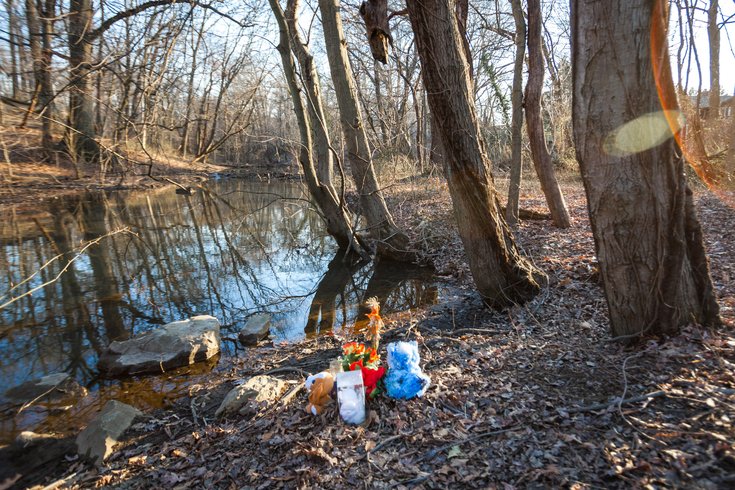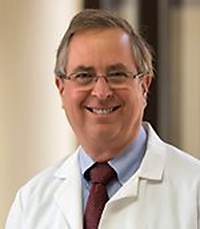
April 08, 2016
 Thom Carroll/PhillyVoice
Thom Carroll/PhillyVoice
The location where the body of 3-year-old Brendan Creato was found along a creek flowing to the Cooper River in Haddon Township.
The criminal investigation into the death of 3-year-old Brendan Link Creato reminds one expert of "The Three Stooges."
“Why Moe, Larry and Curly didn’t follow these steps is a question,” Taff said. "You must anticipate the medicolegal questions and journalistic questions and follow the protocols. If you don’t follow the protocols, it comes up in the courtroom. And it comes up in the courtroom because there is no leadership. I have seen it time and time again.”
Already, the actions of medical examiner's office are being questioned in a legal challenge to the charges against David "DJ" Creato, 22, for the murder of his son. In a court filing last week, his attorney, Richard J. Fuschino Jr. of Philadelphia, argued the medical examiner's office ignored provisions of state law, failed to follow proper investigative procedures and misled a grand jury.
In the Creato case, the death scene investigator assigned to the case by the medical examiner's office appears to have done little more than transport the boy's body to its examination facility at Inspira Medical Center in Woodbury for an autopsy by the county medical examiner, Dr. Gerald "Buck" Feigin. State law required Feigin to report to the scene at Cooper River Park and take control of the investigation as soon as the boy's body was discovered. In practice, however, the task generally falls to a scene investigator assigned to the medical examiner's office.
Feigin did not go to the Haddon Township scene on Oct. 13, 2015, the day the toddler's body was discovered, according to court papers seeking a review of the charges against DJ Creato. The boy's body was found around 9 a.m., resting partially in a creek, his pajamas and diaper pulled partway down.
Instead, investigator Franklin Jackson went to the scene that Tuesday. Feigin did not visit the scene until four days later, even though the State Medical Examiner Act requires the presence of a medical examiner at death scenes in pediatric cases and when the cause of death is "obscure."
Jackson, who is certified as a medicolegal death investigator, appears not to have followed the step-by-step protocols in the U.S. Department of Justice handbook, which offers guidelines for best procedures for scene investigations. (The handbook carries a logo on its cover: "Every Scene. Every Time.")
Jackson's notes from the scene – officially known as the Report of Investigation Medical Examiner, or RIME – indicate he did little more than transport the boy's body to the Woodbury facility for an autopsy by Feigin that began at 1 p.m. that day.
The RIME indicates a detective removed the child's body from the creek, an action to be done only under the supervision of the medical examiner's office, according to state statute and federal guidelines. A detailed external examination of a body is to be completed first without moving the body, the guidelines say, but there is no evidence in documentation that happened in this case.
It’s unclear why Feigin failed to go and why his investigator did not document any investigation at the scene in Cooper River Park, about a half mile from the apartment where the boy lived with his father.
Neither Feigin nor Jackson responded to requests for comment about the characterization of their work in this story. The Camden County Prosecutor's Office has said it will answer in court.
As a former New Jersey medical examiner whose career included running the Northern Regional Medical Examiner's Office, the busiest in the state, Dr. Zhongxue Hua is accustomed to reading RIMEs.
Jackson's report in the Creato case is "confusing," he said.
Hua said death pronouncements are typically done at the scene by an EMT just after a body is discovered. But in this case, the RIME states the boy was not pronounced until 10:30 a.m. at the medical examiner's facility in Woodbury.
When an autopsy – in this case, three autopsies – are inconclusive, “the investigation becomes extraordinarily important. You don’t know unless you go.” – Dr. Michael A. Graham, co-director, Medicolegal Death Investigator Training Course, St. Louis University School of Medicine
Hua, who works as a consultant and teaches at Jacobi Medical Center in the Bronx, said the investigation by the medical examiner – not law enforcement officers – should have begun at the scene right after pronouncement. Either a medical examiner or one of his investigators should have conducted an investigation before any investigation by law enforcement began, Hua said.
Besides an investigator, no one should have touched the boy's body until the undisturbed scene was photographed, Hua said.
Hua said the RIME filed by Jackson shows an "unconventional procedure" was followed that may have had an "impact on the investigation." The pathologist said microscopic evidence could have been lost by law enforcement moving the body.
"The short version is the scene has been altered before any input by an ME," said Hua.
Given how the scene was apparently mishandled "nobody is at the proper position to say anything specific" about how the child died, Hua contended.
Jackson's residence and his business, a funeral home, is on Haddon Avenue in the Westmont section of Haddon Township, a little less than a mile from where the boy's body was discovered. He was not on the medical examiner's official schedule that day, though his name does appear on the very brief scene notes.
Feigin testified to the grand jury he’d gone to the scene, according to Fuschino's legal filing. But neither the medical examiner nor the prosecutor who presented the case disclosed to the grand jury that his trip was made on Oct. 17, four days later, according to the motion.
Taff said the failure of the medical examiner or his investigators to go to the scene may explain why Feigin labeled the death a “homicide by unknown etiology” – either drowning, smothering or asphyxia – which is a very non-specific diagnosis questioned by several legal and medical experts interviewed by PhillyVoice.
The inexact diagnosis sets in play additional courtroom issues, according to experts.
“A nebulous diagnosis like this makes it hard to make a case” before a jury, Taff said.
So do the three autopsies done in October that fail to pinpoint a cause of death, said Lawrence Kobilinsky, a professor of forensics at the John Jay College of Criminal Justice in New York City. Information about the autopsies are contained in documents supporting Fuschino's motion.
Feigin finally made a call and signed the boy’s death certificate and final autopsy on Dec. 15 – two months after the three autopsies were done – one by him, one by Dr. Charles Siebert, an assistant county medical examiner, and another by Dr. Andrew Falzon, the state's acting medical examiner.
The medicolegal death investigators working in the Medical Examiner’s Office serving Camden, Gloucester and Salem counties on the day Brendan Creato's body was discovered were all taught to thoroughly investigate a suspicious scene, according to Dr. Michael A. Graham.
Graham should know: He trained Jackson and each of the other investigators working that day.
 Source/path.slu.edu
Source/path.slu.eduDr. Michael A. Graham is co-director of the Medicolegal Death Investigator Training Course at St. Louis University School of Medicine.
The university's training for scene investigation is far more detailed than the steps outlined in the federal standard used by the American Board of Medicolegal Death Investigators, Graham said.
“In this case, the autopsy wasn’t the answer,” said Graham, who has served as St. Louis’ medical examiner as well working as a professor. "An autopsy is nothing more than a physical examination. The circumstances are extremely important."
When an autopsy – in this case, three autopsies – are inconclusive, “the investigation becomes extraordinarily important,” he said.
“You don’t know unless you go,” Graham said.
Relying on a scene investigation conducted by law enforcement, Hua, Graham, Taff and Kobilinsky each said independently, is unacceptable as the basis for a medical investigation of a homicide.